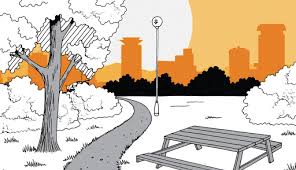

The orders by the Environment Court to Nairobi Governor Johson Sakaja to reopen Central Park to the public bring into sharp focus the place of green urban spaces in society.
The Greenbelt Movement obtained the court orders following the prolonged closure of the popular public park for nearly three years, ostensibly for renovations.
The park provides Nairobians and other Kenyans a place to unwind and break away from the stress of daily life.
Families particularly love the park.
Green spaces, like Uhuru Park, are being threatened by urban expansion.
UN-Habitat estimates that at the current urbanisation rates, at least 50 per cent of Kenyans will reside in towns by 2030, making the need for green and open spaces even greater.
The fact that we are upgrading many towns to cities (Nairobi, Mombasa, Kisumu, Nakuru and Eldoret are now all cities) is testament to the relentless march of concrete and steel.
This development trajectory threatens to turn our vibrant cities and towns into heat islands that lack natural beauty and tranquility.
While development is essential, it’s crucial to strike a balance between progress and the provision of places where the public can unwind.
Green spaces must include abundant shade.
Research shows that shade availability is closely associated with enhanced mental and psychological well-being and productivity at work.
To safeguard our green spaces, national and county governments must craft and implement policies that prioritise environmental conservation.
Urban planners and policymakers must also include green spaces in city development plans.
Identifying the right types of trees and other plants that improve urban aesthetics and shade will be critical.
All new developments should be required to create and maintain sufficient green spaces.
The creation and maintenance of green spaces in our urban areas will require the active participation of the public.
Community-led greening is the most effective way to ensure ownership and sustainability.
Critically, children must be involved in establishing and caring for green spaces because the future belongs to them.
Community participation must go hand in hand with sensitisation on their rights and responsibilities.
For example, public parks should be protected from waste dumping.
Sadly, in some towns, unscrupulous individuals and businesses convert green spaces into dumping grounds.
Like all other public lands, green spaces are highly susceptible to land grabbing.
Land sharks and well connected individuals swiftly convert ownership of these places and create private title deeds.
Managers of our green spaces must vigilantly defend against land grabbing by ensuring that title deeds are processed and securely stored.
By preserving and expanding our green spaces, we can create healthier, more resilient and more liveable cities.
Let us not sacrifice our future for short-term gains.
Let us embrace a greener future where our cities are not just concrete jungles but vibrant, sustainable and human-centred oases.
KEN MWATHE
Environmental leader and climate and policy analyst



